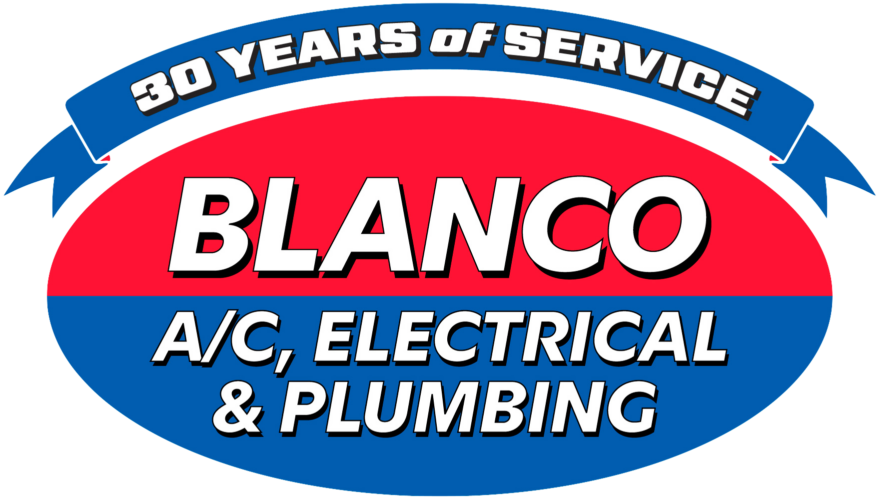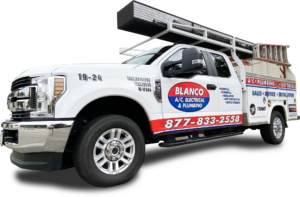Knowing how to use a plunger may seem like common sense, but there’s more to it than many homeowners may realize. Plungers are not universal, and understanding which type you should use for different drains is crucial. In addition, you must apply the correct technique to ensure the best results possible.
Blanco AC, Electric & Plumbing is here to share these tips with you so that next time there’s a clogged drain, you know exactly what to do. In the event that you need professional help, we offer bathroom plumbing, drain clearing and plumbing repair services.
Read on to discover which plungers are best for which drains and the proper technique for unclogging!
Choosing The Right Plunger
There are two main types of plungers. You are probably most familiar with the “cup” style, which consists of a rubber cup attached to the end of the handle. The “flange” style is very similar but has an extra ring of rubber around the cup. It’s best to keep one of each type on hand as each is better suited for different drain emergencies.
Cup Plungers
Cup plungers are more effective on flat-surface drains such as showers, bathtubs and sink drains. Unfortunately, the curvature of toilet drains does not allow this style to form a proper air-tight seal for sufficient suction.
Flange Plungers
Clogged toilets should be treated with a flange plunger instead, as the extra rubber ring provides better suction. The “flange” fits inside the toilet drain, creating a perfect seal for optimal suction power. If need be, you can use this type on bathtub and sink drains by folding the extended ring of rubber inside the bell of the plunger.
Plunger Technique
Shower, Bathtub And Sink Drains
Before attempting to unclog a drain, here are a few tips to ensure a tighter seal and stronger suction:
- Seal off any nearby drains
- Line the rim of the plunger cup with petroleum jelly
- Place a wet towel over the clogged drain
If there is too much water overflow, scoop some out into a cup or bucket to minimize the mess. Place the rubber cup firmly over the drain and gently push down on the handle. Begin to plunge by applying a quick thrusting motion to send pressure down the drain. Be careful not to work the plunger too aggressively that the seal breaks. Continue pushing down for about 20 seconds to clear the clog.
Toilet Drains
When your toilet overflows, your first instinct may be to keep flushing. However, you must refrain from doing so as this will only add more water to the bowl, worsening the issue. Instead, wait at least 10 minutes to allow the water level to drop. If there is still too much water, scoop out the excess. However, there has to be enough water present to ensure proper suction. You want the bowl filled about halfway, so add more water if there is not enough.
Next, find the water supply hose behind your toilet and turn the handle right to close off the valve. Using the flange plunger, insert the extended ring directly into the drain opening. Apply a rapid push-and-pull technique for about 20 seconds, making sure not to lift the plunger too much that it breaks the seal. This should be enough to remedy the common clog, so if your toilet remains stopped up, there may be a bigger problem. When plunging fails, try a drain snake or call a professional!
When NOT To Use A Plunger
You should not use a plunger in conjunction with drain-clearing chemicals, as this is a safety hazard. Plunging is messy business, and doing so with toxic substances increases the risk of it splashing on you. Contact with your skin or eyes can lead to serious issues such as burns and even blindness.
You should also refrain from using a plunger on clogs caused by foreign objects such as q-tips, toothpicks, etc. Plunging in these instances can actually make the issue worse by forcing the object deep into the drainpipe. Instead, try using a toilet auger, which is a specialized form of drain snake, to remove the object safely.
Lastly, do not use a plunger on drains coated with oils, grease or other non-water-soluble substances. A plunger will only push the debris further into your pipeline, creating more severe clogs.
Serving Texas Hill Country With Plumbing Services Since 1994!
At Blanco AC, Plumbing & Electric, we take pride in serving our community. As the premier choice for bathroom plumbing services in Blanco, let us handle any and all of your plumbing repair needs!
We offer various financing options AND a waived service fee if you schedule a plumbing service on a Monday. However, contact our emergency service line if it is an urgent matter.









